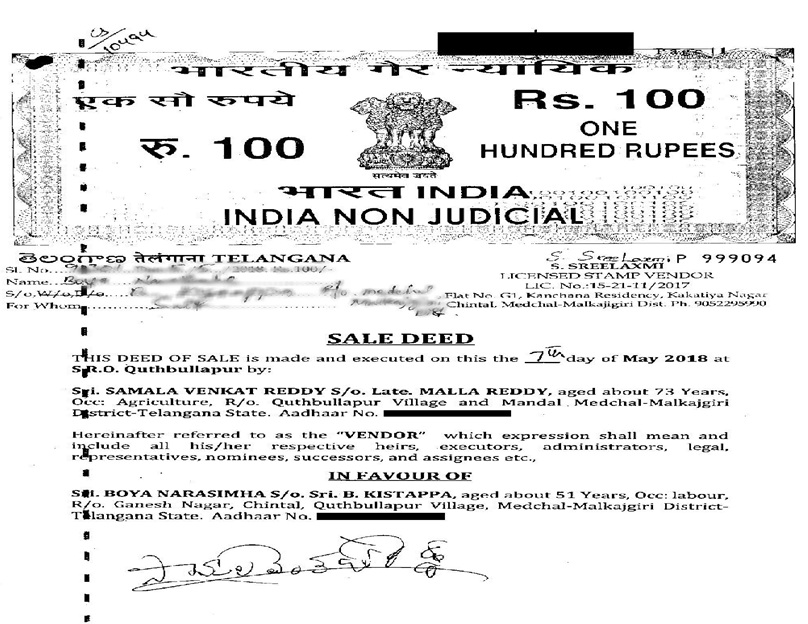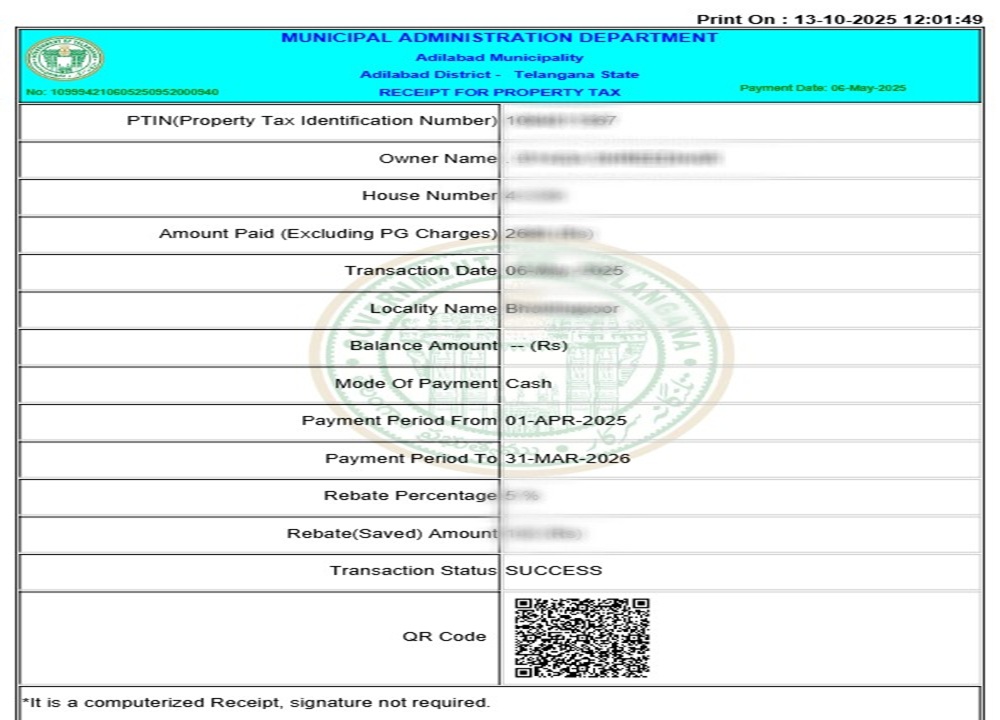Adangal is a crucial land record document in Andhra Pradesh that holds significant value for landowners and farmers alike. This official record provides essential details such as land ownership, area, and agricultural activities, making it a vital resource for managing land effectively. Understanding Adangal is not only important for legal purposes but also for ensuring transparency in land transactions and agricultural operations.
With the increasing emphasis on digitalization, obtaining an Adangal has become more accessible than ever. The Andhra Pradesh government has streamlined the process, enabling citizens to access land records online, thus simplifying the bureaucratic procedures traditionally associated with land management. This transition from paper to digital has created a more efficient system for tracking land ownership and usage.
Navigating the complexities of land documentation can be overwhelming, but knowledge of Adangal can empower individuals in Andhra Pradesh to secure their agricultural interests and legal rights. Awareness of what an Adangal encompasses and how it can be acquired will provide significant advantages to landowners and farmers trying to establish or maintain their agricultural operations.
Key Takeaways
- Adangal contains critical information about land ownership and usage.
- Digitalization has made accessing Adangal easier for the public.
- Knowledge of Adangal aids in securing legal rights in land transactions.
Understanding Adangal
Adangal serves as a crucial land record document in Andhra Pradesh, providing essential details about agricultural land. It plays a significant role in establishing land ownership and usage, vital for both administrative purposes and farmers.
Definition and Purpose
Adangal is primarily an agricultural land record that documents crop details, land usage, and other relevant agricultural information. It is often referred to as the Record of Tenancy and Crops and contains specifics such as:
- Ownership details: Identifies the landowner.
- Crop type: Lists the crops grown on the land.
- Land classification: Describes the type of land (e.g., irrigated, non-irrigated).
This document is vital for farmers when applying for loans, subsidies, or land registration. Additionally, it helps government authorities in managing land distribution and agricultural policies.
History and Origin in Andhra Pradesh
The practice of maintaining land records in Andhra Pradesh has deep historical roots. Traditionally, local village officials kept these records to manage land disputes and taxation. The formalization of Adangal began in the early 20th century as part of the British land revenue system.
As agricultural practices evolved, the need for accurate documentation grew. Today, Adangal is part of the State Government’s efforts to digitize land records through initiatives like the Meebhoomi portal, making land information more accessible to citizens. This evolution underscores the importance of Adangal in supporting farmers and ensuring efficient land management.
Legal Aspects of Adangal
Adangal serves as a crucial legal document in Andhra Pradesh’s land administration. It plays a significant role in property disputes and establishes ownership rights, providing essential information for land transactions.
Adangal as a Legal Document
Adangal is recognized as an official revenue document issued by the Mandal Revenue Office. It provides detailed information about land ownership, including the owner’s name, land area, type of cultivation, and irrigation sources. This document is vital for individuals seeking to establish or verify land ownership.
In legal terms, Adangal can serve as evidence in court cases related to land disputes. It contains entries that capture historical data about the land, which can be pivotal during litigation. The accuracy and authenticity of Adangal entries are crucial, as they can impact the outcome of legal proceedings.
Role in Property Disputes
Adangal plays a significant role in resolving property disputes in Andhra Pradesh. In cases where ownership is contested, Adangal serves as a primary reference point. It provides necessary details that can clarify ownership claims between parties.
Furthermore, when disputes arise over boundary lines or land use, the information recorded in the Adangal can aid in the settlement process. Officials may rely on this document to mediate conflicts effectively. Its legal standing enhances its credibility in dispute resolution, making it a powerful tool for landowners.
How to Obtain an Adangal
Obtaining an Adangal, an essential revenue document in Andhra Pradesh, can be done through both online and offline methods. Each process has distinct steps that should be followed carefully to ensure a smooth acquisition.
Online Process
The online process for obtaining an Adangal is facilitated through the AP Mee Bhoomi portal. Citizens can visit the official site at meebhoomi.ap.gov.in.
- Registration: Users must register on the portal using their mobile number and Aadhaar details.
- Login: After registration, log in to the portal.
- Search for Adangal: Navigate to the land records section and select ‘Adangal.’
- Enter Details: Provide necessary details such as district, Mandal, and village name.
- Download: After the details are validated, the Adangal can be viewed and downloaded in a digital format.
This method ensures a quick and efficient way to access land records.
Offline Process
The offline method requires visiting the Mandal Revenue Office (MRO) for obtaining an Adangal. Here’s how it works:
- Visit the Office: Locate the nearest MRO in the relevant district.
- Application Form: Request the necessary application form for obtaining an Adangal.
- Submit Documents: Fill out the form and submit it along with required documents, such as proof of land ownership.
- Verification: The MRO will verify the submitted documents.
- Get Adangal: Upon successful verification, the Adangal will be issued, usually within a few days.
This process may take more time compared to the online method but is essential for those who prefer in-person assistance.
Information Contained in Adangal
Adangal is a vital document that provides key insights into land ownership and usage in Andhra Pradesh. The following subsections will detail the essential categories of information included in the Adangal.
Landowner Details
The Adangal contains specific information about the landowner, which is crucial for legal and administrative purposes. It typically includes the following:
- Name of the Owner: Identifies the individual or entity that possesses the land.
- Father’s/Husband’s Name: Establishes the familial connection, which can support identity verification.
- Location: Specifies the village or locality of the land.
- Type of Ownership: Indicates whether the land is owned outright or under a lease.
These details help in the identification of rightful owners and facilitate any transactions or disputes related to the land.
Land Details
Information regarding the land itself is another critical component of the Adangal. This section includes:
- Survey Number: A unique identifier assigned to each plot of land for easy reference.
- Land Classification: Details whether the land is agricultural, residential, or commercial.
- Total Area: Specifies the size of the land, usually measured in acres or square feet.
- Boundaries: Provides information on the neighboring land parcels, which is important for delineating ownership.
These elements are essential for land administration and for ensuring clarity in land transactions.
Cultivation Details
Cultivation details in the Adangal provide insights into how the land is being used. This information includes:
- Crops Grown: Lists the types of crops cultivated on the land, which affects its valuation and use permissions.
- Cultivation Status: Indicates whether the land is currently being cultivated or left fallow.
- Irrigation Sources: Details the sources of water used for irrigation, such as borewells or canals.
This information is crucial for assessing land productivity and for planning agricultural policies and support programs.
Adangal’s Role in Agriculture
Adangal serves a crucial function in supporting agricultural activities in Andhra Pradesh. It provides essential information vital for farmers and impacts agricultural policies.
Supporting Farmers
Adangal, also known as Pahani, is a significant land record for farmers. It contains detailed information about land ownership, crop patterns, and soil assessments. This information enables farmers to make informed decisions regarding cultivation practices.
With accurate data from Adangal, farmers can apply for various government schemes and subsidies. This includes financial assistance and resources for irrigation or equipment. Adangal helps in verifying claims, ensuring that support reaches genuine beneficiaries.
Understanding the contents of Adangal empowers farmers to maintain efficient land management. This record acts as proof of ownership and simplifies processes, such as land leasing or selling.
Impact on Agricultural Policies
The information recorded in Adangal directly influences agricultural policies in the state. Government agencies utilize this data to plan and implement various agricultural programs effectively. It aids in assessing land usage patterns, which is vital for sustainable agriculture.
Policymakers rely on Adangal to identify areas requiring intervention, such as irrigation support or crop insurance. By analyzing the agricultural statistics logged in this record, they can allocate resources wisely.
Furthermore, Adangal promotes transparency in land transactions. This ensures that policies reflect the ground realities faced by farmers, fostering an environment conducive to growth and development.
Digitalization Efforts
The digitalization efforts in Andhra Pradesh aim to enhance service delivery and streamline governmental processes. Key initiatives focus on establishing e-governance frameworks while addressing the challenges that come with digital transformation.
E-Governance Initiatives
Andhra Pradesh has implemented various e-governance initiatives to improve access to public services. Programs like the Digital India mission have introduced platforms such as BharatNet, which aims to connect rural areas with high-speed internet.
Additionally, the National Optical Fibre Network (NOFN) is a critical component in this strategy. It seeks to empower citizens by enhancing connectivity, although its progress has been slow, with only about 601 Gram Panchayats connected so far. The Digital Empowerment Foundation has also been established to facilitate skills development among citizens, improving their digital literacy.
Challenges and Solutions
Despite notable progress, several challenges persist in the digitalization efforts. Limited internet access in rural areas remains a significant barrier, affecting service delivery. To combat this, the government is working on expanding connectivity through community-based initiatives.
Moreover, the lack of digital skills among the population hinders full utilization of e-governance services. To address this, targeted training programs are being rolled out to enhance digital literacy. These efforts are crucial for ensuring that all citizens can benefit from the advancements in e-governance and digital services.
Frequently Asked Questions
This section addresses common inquiries regarding Adangal in Andhra Pradesh. The focus is on how to access, download, and understand this important land record documentation.
How can I check my Adangal document online in Andhra Pradesh?
To check the Adangal document online, individuals can visit the MeeBhoomi portal. They will need to enter specific details such as the survey number, village name, and other identifiers to retrieve their document.
What are the steps to download Adangal from Meebhoomi portal?
To download Adangal from the MeeBhoomi portal, users should follow these steps:
- Visit the official MeeBhoomi website.
- Navigate to the Adangal section.
- Enter the required details like village and survey number.
- Click on the download option to save the file.
How to obtain Adangal documents through the Meebhoomi mobile app?
To obtain Adangal documents using the Meebhoomi mobile app, follow these steps:
- Download the Meebhoomi app from the app store.
- Select the relevant options for your district and village.
- Enter your survey number.
- Access and download the Adangal document directly from the app interface.
What is the significance of 1B and Adangal in the context of land records?
The 1B document and Adangal serve as critical records for landowners in Andhra Pradesh. They provide essential details about land ownership, crop cultivation, and land use. These documents are often necessary for legal verification and financial transactions related to land.
Can I view the Adangal map for a specific plot of land in Andhra Pradesh?
Yes, individuals can view the Adangal map for a specific plot of land through the MeeBhoomi portal. They will need to input specific details like the survey number and village to access the map associated with that plot.
What is the procedure to apply for an Adangal certificate in Andhra Pradesh?
To apply for an Adangal certificate, applicants must visit their local revenue office. They should submit the necessary application form along with required documents, including proof of identity and land ownership. The local authorities will then process the application and issue the certificate accordingly.



